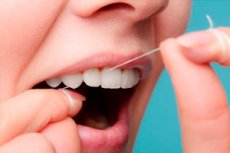Treatment of gingivitis during pregnancy reduces the risk of premature birth
Last reviewed: 14.06.2024

All iLive content is medically reviewed or fact checked to ensure as much factual accuracy as possible.
We have strict sourcing guidelines and only link to reputable media sites, academic research institutions and, whenever possible, medically peer reviewed studies. Note that the numbers in parentheses ([1], [2], etc.) are clickable links to these studies.
If you feel that any of our content is inaccurate, out-of-date, or otherwise questionable, please select it and press Ctrl + Enter.

A study conducted by researchers at the University of Alabama at Birmingham School of Dentistry found that oral health education delivered by nurses was effective in reducing gum inflammation in pregnant women. The results were published in the Journal of Midwifery & Women's Health.
According to the Centers for Disease Control and Prevention, 60% to 75% of pregnant women develop gingivitis due to hormonal changes that occur during pregnancy. Periodontal disease can present an inflammatory and microbial burden on the body that is associated with adverse pregnancy outcomes such as preterm birth and low birth weight.
"Our study shows that treating gingivitis during pregnancy may reduce the risk of preterm birth,” said Nicolaas Geurs, DDS, is dean of the University of Alabama School of Dentistry. "The main takeaway from this study is that pregnant women should keep their teeth clean, which is easy to do with good oral hygiene such as brushing and flossing."
The study was conducted among 750 pregnant women between eight and 24 weeks of pregnancy with moderate to severe gingivitis. Black women made up two-thirds of the participants.
Each participant received oral hygiene instructions and supplies to maintain good hygiene, including a toothbrush, toothpaste, and dental floss.
Both groups of participants showed significant improvement in oral health, as reflected by a decrease in the number of bleeding sites compared to baseline levels.
In addition to home oral care, Goers and his team also focused on a model of care that combines both dental and prenatal care. The study was conducted in obstetric clinics located in two medical centers.
At these clinics, Goers and his team trained nurses to provide oral hygiene instructions to patients. They found that the integration of dental care and medicine also played a role in improving oral health in pregnant women.
“Oral hygiene is critical to overall health,” Geurs said. "By working with nursing staff and teaching them how to provide oral hygiene instruction in prenatal care, we have found that we can make an impact on the overall health of the patient."
